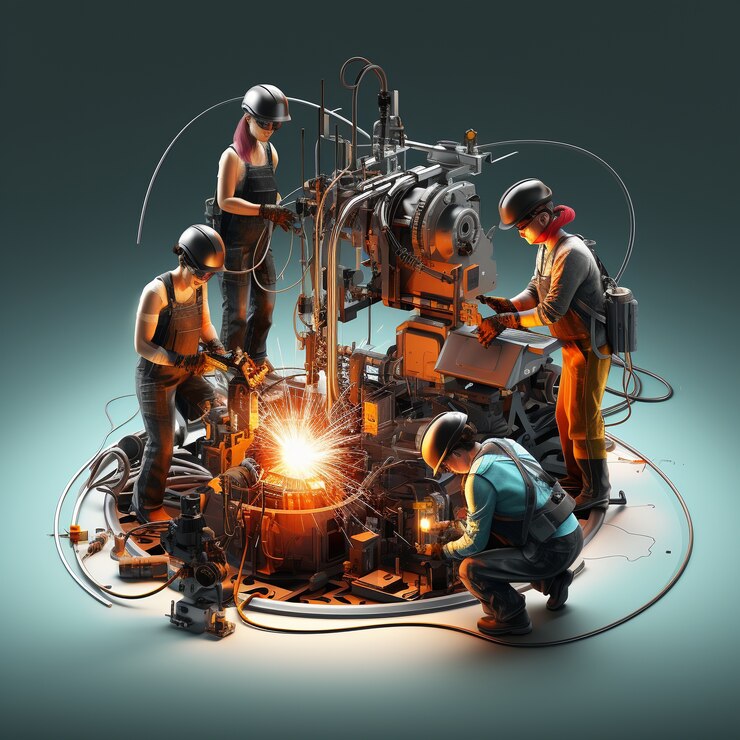I. Introduction
A. Importance of Quality Assurance in Pharmaceutical Manufacturing
In the complex landscape of pharmaceutical manufacturing, quality assurance (QA) is indispensable. QA not only ensures the safety, efficacy, and quality of drugs but also fosters consumer trust by minimizing the risk of product recalls and regulatory non-compliance. Through rigorous monitoring and adherence to standards, QA safeguards public health and upholds the integrity of the pharmaceutical industry.
B. Overview of GMP Certification and Its Significance
Good Manufacturing Practices (GMP) serve as the cornerstone of pharmaceutical quality management. GMP certification validates a manufacturer’s commitment to compliance with these stringent standards, instilling confidence in regulatory bodies, healthcare professionals, and patients alike. By adhering to GMP guidelines, companies mitigate risks, enhance product quality, and maintain a competitive edge in the global market.
II. Understanding GMP Certification
A. Definition and Purpose of GMP Certification
GMP certification validates that pharmaceutical manufacturers adhere to Good Manufacturing Practices (GMP) guidelines, ensuring the quality, safety, and efficacy of their products. It serves as a testament to a company’s commitment to maintaining high standards throughout the manufacturing process, from raw material sourcing to product distribution. By obtaining GMP certification, manufacturers demonstrate their dedication to regulatory compliance and consumer safety, fostering trust among stakeholders.
B. Key Components of GMP Certification Process
The GMP certification process involves several key components:
- Documentation Review: Regulatory agencies and certification bodies conduct thorough reviews of the manufacturer’s quality documentation, including standard operating procedures (SOPs), batch records, and quality control records, to assess compliance with GMP standards.
- On-Site Inspection: Inspectors conduct on-site inspections of manufacturing facilities to evaluate adherence to GMP guidelines. This includes assessing facility design, equipment maintenance, cleanliness, personnel training, and adherence to sanitation practices.
- Audit and Assessment: Manufacturers undergo audits and assessments to verify compliance with GMP regulations. This may involve evaluating quality management systems, risk management processes, and corrective and preventive action (CAPA) procedures to ensure continuous improvement.
III. Benefits of GMP Certification
A. Ensuring Regulatory Compliance
GMP certification ensures that pharmaceutical manufacturers comply with regulatory requirements set forth by agencies such as the FDA and EMA. By adhering to GMP guidelines, companies demonstrate their commitment to meeting stringent quality standards, which is essential for obtaining regulatory approval for product manufacturing, distribution, and marketing.
B. Enhancing Product Quality and Consistency
GMP certification plays a pivotal role in maintaining and improving product quality and consistency. By implementing standardized processes, rigorous quality control measures, and continuous monitoring, manufacturers can identify and address deviations from quality standards promptly. This results in the production of pharmaceutical products that meet specifications and deliver consistent therapeutic outcomes to patients.
C. Building Consumer Trust and Market Reputation
GMP certification instills confidence in consumers, healthcare professionals, and regulatory agencies by assuring them of the safety, efficacy, and reliability of pharmaceutical products. Companies that hold GMP certification demonstrate their commitment to quality, compliance, and patient safety, thereby building trust and credibility in the market. This positive reputation enhances brand value, fosters customer loyalty, and provides a competitive advantage in the pharmaceutical industry.
IV. Key Requirements for GMP Certification
A. Facility Design and Maintenance
GMP certification mandates that manufacturing facilities meet pharmaceutical quality standards in design, construction, and maintenance. This encompasses considerations such as adequate space, ventilation, and equipment maintenance to ensure consistent product quality. The layout should facilitate efficient workflow and minimize the risk of contamination.
B. Personnel Training and Qualification
Personnel involved in pharmaceutical manufacturing must undergo comprehensive training to meet GMP certification requirements. Training covers topics such as regulations, hygiene, and quality control, ensuring employees are knowledgeable and competent in their roles. Regular assessments and continuing education programs help maintain proficiency and adaptability in a dynamic regulatory environment.
C. Documented Procedures and Record-Keeping
Comprehensive documentation of manufacturing processes is required for GMP certification. This includes SOPs, batch records, and quality control documentation, providing a roadmap for operations and a traceable record of compliance. Effective record-keeping facilitates regulatory compliance and streamlines the GMP certification process. It also serves as a valuable resource for audits, inspections, and continuous improvement initiatives.
V. Steps to Achieve GMP Certification
A. Gap Analysis and Readiness Assessment
Before pursuing GMP certification, pharmaceutical manufacturers conduct a thorough gap analysis and readiness assessment. This involves evaluating current practices, processes, and documentation against GMP requirements to identify areas of non-compliance and areas needing improvement. The gap analysis provides valuable insights into the steps needed to achieve GMP certification.
B. Implementation of GMP Practices
Once gaps are identified, manufacturers implement necessary changes and improvements to align with GMP practices. This may involve revising standard operating procedures (SOPs), upgrading facilities and equipment, enhancing personnel training programs, and implementing quality control measures. By systematically implementing GMP practices, companies ensure compliance with regulatory standards and enhance the quality and safety of their products.
C. External Audit and Certification Process
After implementing GMP practices, manufacturers undergo an external audit conducted by a certification body or regulatory agency. During the audit, inspectors assess the company’s adherence to GMP guidelines, reviewing documentation, inspecting facilities, and interviewing personnel. If the company demonstrates compliance with GMP requirements, it receives GMP certification, validating its commitment to quality and regulatory compliance. GMP certification is typically renewed periodically through follow-up audits to ensure ongoing compliance with evolving regulatory standards.
VI. Future Trends in GMP Certification
A. Emerging Technologies Impacting GMP Certification
The future of GMP certification is intertwined with emerging technologies that offer innovative solutions for pharmaceutical manufacturing. AI-driven predictive analytics optimize manufacturing processes, while advanced manufacturing technologies like continuous manufacturing streamline production, maintaining GMP compliance. The integration of blockchain technology for enhanced supply chain traceability and real-time monitoring is also expected to play a significant role in future GMP certification processes.
B. Evolving Regulatory Landscape and Its Influence on Certification
Regulatory authorities are increasingly emphasizing risk-based approaches to GMP certification, focusing on data integrity, supply chain transparency, and continuous improvement. As the regulatory landscape evolves, GMP certification must adapt to accommodate new requirements, ensuring compliance with changing regulations and market demands. Collaboration among regulatory agencies and international harmonization efforts will become increasingly important for ensuring consistency and efficiency in GMP certification processes globally.
VII. Conclusion
A. Recap of Key Benefits and Components of GMP Certification
GMP certification offers numerous benefits, including ensuring regulatory compliance, enhancing product quality and consistency, and building consumer trust and market reputation. Key components of GMP certification include facility design and maintenance, personnel training and qualification, and documented procedures and record-keeping.
B. Encouragement for Businesses to Pursue GMP Certification
For pharmaceutical businesses, pursuing GMP certification is not just a regulatory requirement but also a strategic investment in quality and compliance. By obtaining GMP certification, companies demonstrate their commitment to producing safe and high-quality products, thereby gaining a competitive edge in the market and enhancing their reputation among stakeholders.
C. Final Thoughts on the Transformative Impact of GMP Certification
GMP certification has a transformative impact on the pharmaceutical industry, driving continuous improvement, innovation, and adherence to global quality standards. As the industry evolves and embraces emerging technologies and regulatory changes, GMP certification remains essential for ensuring the safety, efficacy, and reliability of pharmaceutical products, ultimately benefiting patients and public health worldwide.





